Twice a year, an almost deathly silence falls on the Tuscan city of Siena. It is the moment just before the rope drops in the Piazza del Campo to signal the start of the Palio, the city’s ancient horse race and fiercest rivalry.
Siena’s Palio is as mad as it is old. Ten horses and ten riders, representing ten of Siena’s seventeen contrade, or districts, race three laps of the city’s main square at breakneck speed before thousands of screaming spectators, in a tradition dating back to 1633 — the year Galileo was convicted of heresy for insisting that the Earth revolved around the Sun. Every summer, two palii are held: one on July 2, in honor of the Madonna di Provenzano, and one on August 16, the Palio dell’Assunta during the feast of the Assumption. What’s at stake? The palio, a rectangular piece of embroidered silk known affectionately to locals as the cencio, or rag, centuries of cultural identity and tradition, and endless bragging rights.
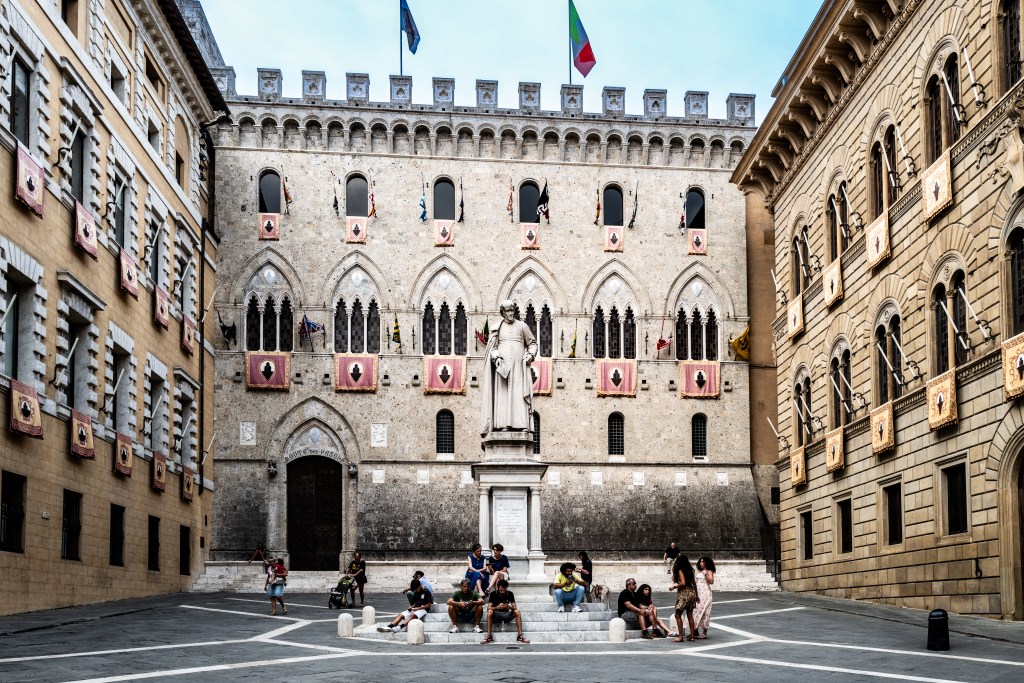
I’m here with a big group for the August race. With us are the McCullins family, whose silverback Don, the legendary photojournalist, has documented every major conflict and event of the last fifty years but has never seen the Palio. Thanks to Palio doyen Mark Getty, who has two horses running in the race and is a keen admirer of Don’s work, we have been granted special access to several race-week privileges.
One morning we attend the prove, or trials, to see the horses race around the square in front of the capitani, the main representatives of the participating contrade. They are looking for the ten most evenly matched horses, the ones that will cope best on the precarious track, with its hairpin bends and mattress-padded sides. At midday, on a platform outside the Palazzo Pubblico, a lottery is held to determine which horse will run for which contrada. This is one of only two conditions of the race which can’t be negotiated by the contrade. Mark gets lucky; he is not only fielding two strong horses, but one of them has been drawn to this year’s favorite contrada, Istrice, or porcupine (each contrada has its own emblem and team colors). While the contrade can’t pick their horses, they can pick their fantini or jockeys, and Istrice has done well to secure Tittia, otherwise known as Giovanni Atzeni, a ten-time Palio winner with the most wins of any active jockey.
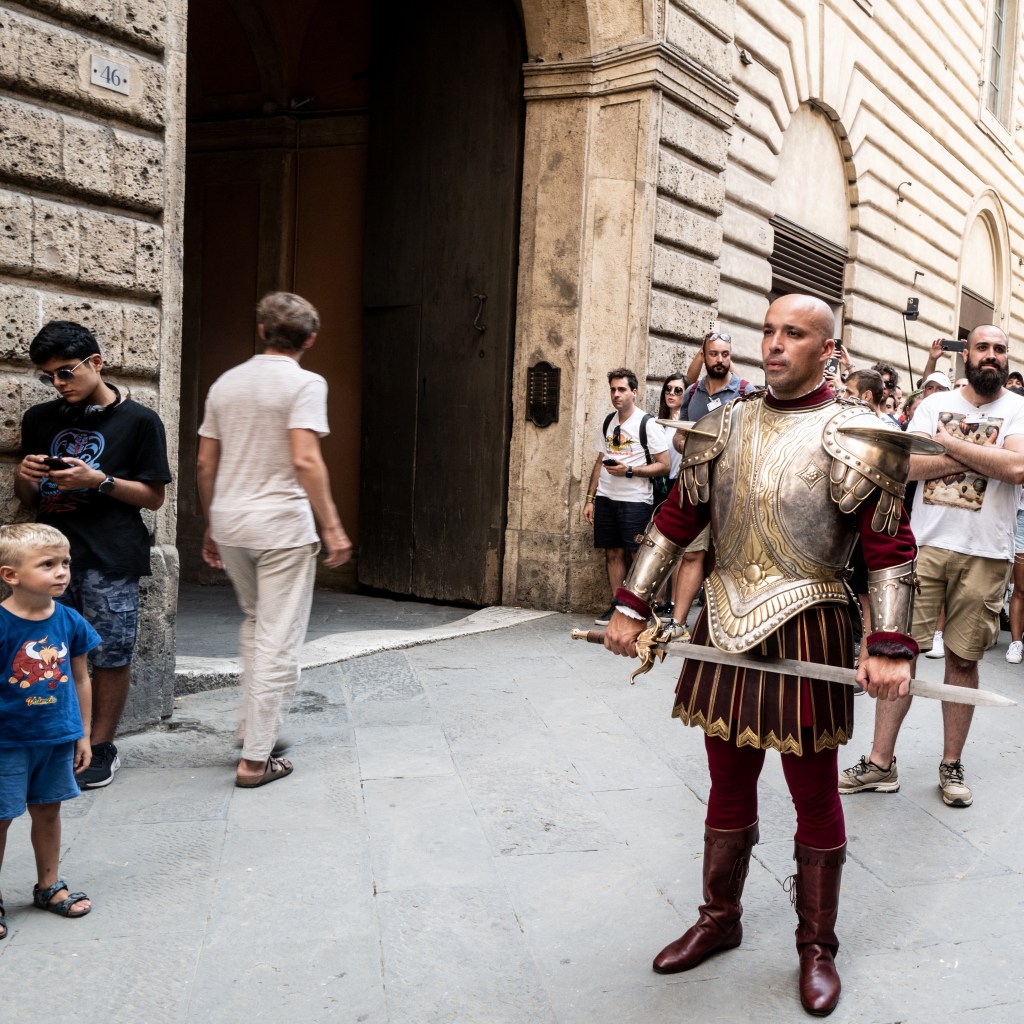
Most of the jockeys come from Sardinia, a tradition which began in 1964 when an unknown twenty-one-year-old fantino from the island won his debut Palio (Andrea Degortes, nicknamed Aceto, or “Vinegar,” would go on to win a record fourteen palii). The horses, too, come from Sardinia, which boasts a bareback culture like Siena’s. They must be of mixed breed (generally Anglo-Arab-Sardinian). In 2019, one of Siena’s most celebrated jockeys was imprisoned for falsifying the passports of thoroughbred horses, trying to pass them off as mixed breed.
On the evening before the race, each participating contrada hosts a fundraising dinner. Mark arranges for us to attend the Lupa (she-wolf) dinner, held in the square next to the sixteenth-century Oratorio di San Rocco, its church and HQ. He courteously walks us here but soon vanishes as Lupa is Istrice’s main rival, and feelings run deep. Earlier in the day, while sauntering around Siena in our Lupa fazzoletti (neckscarves), my father and I got caught in an Istrice rally. The packed, singing procession had come to a standstill in the street when a pretty girl tapped me on the shoulder and said: “Just a suggestion, but I would run before the boys see you.”
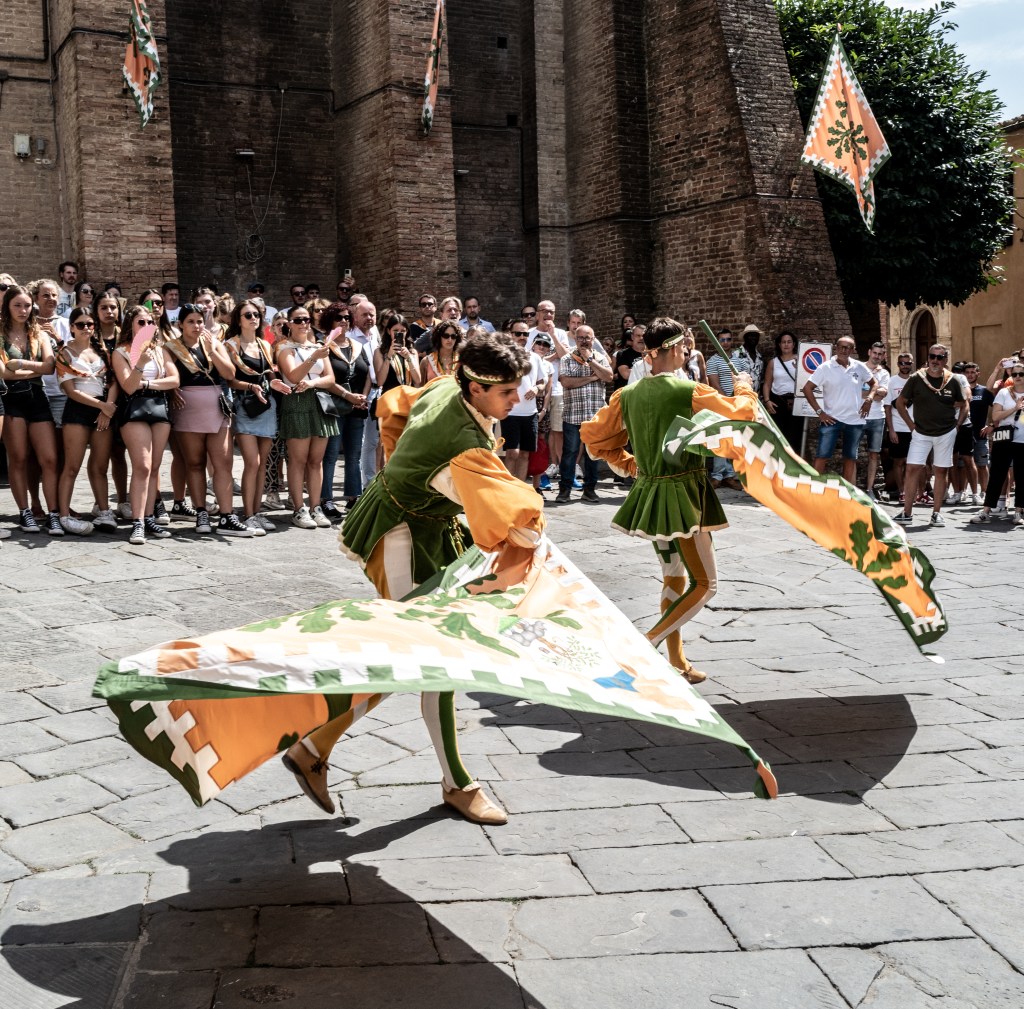
Around long white tablecloths sit 500 Lupa contradaioli, or supporters. On a stage overlooking them sit the capitani, flanking the fantino in a scene reminiscent of the Last Supper. Everyone wears Lupa’s white, black and orange fazzoletto, depicting a she-wolf suckling Romulus and Remus — hence this contrada’s strong connection with Rome. Wine is poured by an army of teenagers dressed all in white and between courses of fresh pasta, deliciously al dente, people rise from their chairs and break out in song. Toward the end of the meal, in a sort of tithe, the teenagers go around collecting donations from the Lupa faithful.
Lupa hasn’t won in years, and you can tell by the mood here. Over at Istrice, they have already raised $3 million, we’re told. How much is raised depends on a contrada’s horse and jockey, i.e., its chance of success. And the more money it raises the more negotiating power the contrada has — the money is used by the different contrade to get others to do their bidding. A part of it is set aside as prize money if their jockey wins. So it all comes down to the generosity of the contradaioli on the evening, their confidence and their drunkenness. Despite a popular misconception, there is in fact very little betting at the Palio. As Mark says, “The attachment to the contrada is far too strong to bet. I have a million conversations a day during Palio week and I’ve never heard about anyone placing a bet or odds being discussed.” This was disappointing to one member of our party who was hoping for a little flutter and so spent his morning wandering around Siena looking for a betting shop. Directed to the square, he found himself looking for an underground betting ring, possibly with discreetly loitering bookies — none of whom actually exist. His search wasn’t entirely fruitless as he did manage to end up on local Italian television where, as a self-proclaimed “racing enthusiast,” he was asked for his expert opinion on the conditions of the track. He was overheard telling the reporter, “It’s frightfully dangerous. No, I don’t think we would ever see something like this in Trafalgar Square.”
Lupa’s fantino Dino Pes, known as Velluto (Velvet), has nine races to his name but no victories, and his lack of form (he hasn’t raced in seven years) isn’t exactly lining the Lupa coffers. He is also riding a debutant horse, Benitos. At the end of dinner, following a speech by the capitano, Velluto rises to give his own; a resigned, monotone address, more dirge than rousing declamation. Following these dinners, in what’s known as the partiti, the capitani meet to make their secret negotiations, either to favor themselves or to hinder a rival. It all happens on a handshake.
Race day. At 3 p.m., we meet Mark outside the Chiesa di San Sebastiano, belonging to the Selva (forest) contrada, to witness the benedizione of its horse. Selva’s coat of arms, orange and green with a white band, features a rhino beneath an oak tree hung with hunting tools — symbolic of the district’s once being home to the city’s hunters. Today it is known as a contrada without enemies, the Switzerland of the race. But this wasn’t always the case, and it once nurtured a fierce rivalry with Pantera, which began in the Palio of 1745 when a panterino jumped onto the track to obstruct Selva’s horse, clearing the way for a Pantera victory. Thereafter brawls regularly broke out between the rival contrade, and in 1871 a selvaiolo shoemaker was murdered by a panterino, who was himself found dead three years later. In August 1919, another bloody business unfolded when a dispute which began over payment — an ex-Selva jockey was suspected of withholding prize money from a previous race — ended in his fatal stabbing by a selvaiolo stableboy. Selva won that Palio but was thought to be cursed — victory then eluded it for thirty-four years.
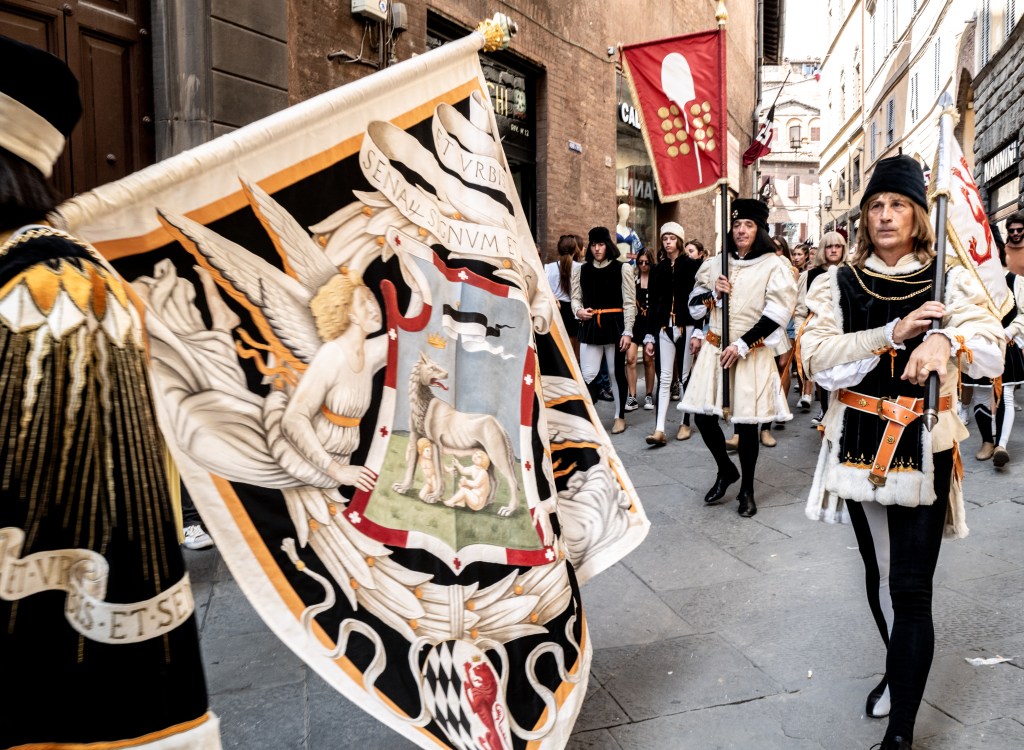
Inside the church, Don, his wife Catherine and I watch from the rafters as 200 people pour in. First come the contradaioli, dressed in orange and green-striped knee breeches, velvet gowns, medieval caps and wigs. Next come the legions of Selva fans, in t-shirts, shorts and gym shoes, their necks adorned with fazzoletti. Finally, the jockey arrives, and the horse is led in by his groom. The heat is stifling and one poor contradaiolo stands in a full suit of armor, the sweat repeatedly wiped from his forehead by an assistant. As the priest recites a prayer, the congregation falls silent. Turning to the horse, the priest blesses it with the thunderous words: Vai e torna vincitore! “Go and come back a winner!” The jockey embraces the different members of the capitani. As he makes for the door, he is overwhelmed by embraces; people reach out to touch his head, his shoulders, anywhere they can. A rousing Canto della Verbena breaks out, a Sienese song of defiance which reverberated across Italy’s towns and cities during lockdown. Outside the church, a large crowd is gathered to watch two contradaioli engaged in an artful display of flag-throwing. Catherine falls hopelessly in love with one of the flagbearers, who looks straight out of Franco Zeffirelli’s Romeo and Juliet. To singing and the pounding of drums — medieval rituals which boosted morale before battle — the procession makes its way to the piazza.
Through a contact of Mark’s, we have reserved spots on “Siena’s most communist balcony,” so named because Federica, our lovely, sparkling-blue-eyed hostess, keeps her prices low. We have an unrivaled view of the piazza, already brimming with thousands of spectators feverish with anticipation. But at 4:40 p.m., just before the parade is meant to enter the square, drops of rain begin to fall. After thirty minutes of rumors and grumbles, the dreaded green flag is raised outside the Palazzo Publico. The race will be postponed by a day. Since the July race was also rained off, this is the first time in 137 years that both have been delayed by rain.
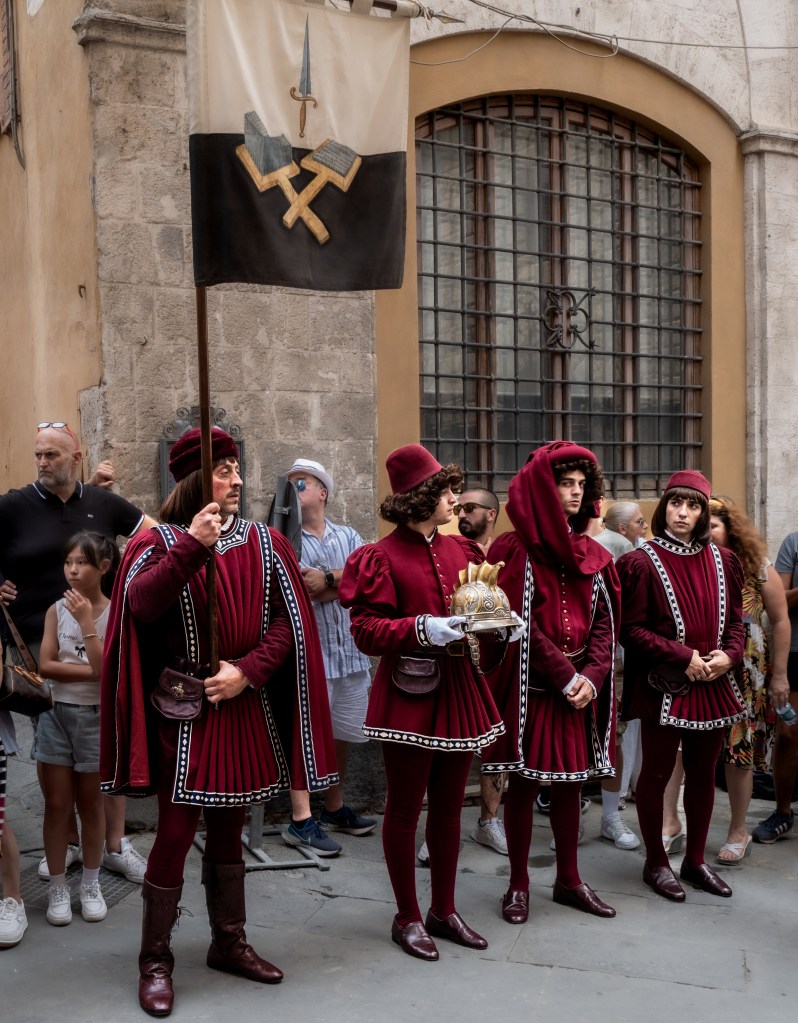
The next morning, Mark calls. Despite the forecast of more rain, he is confident the race is going ahead. At 6 p.m. we reassemble on the balcony. This time there will be no corteo storico, the lengthy costume parade which usually precedes the race around the square. There is minimal flag-waving and the measured, ominous beating of drums. At 6:55 p.m. the horses and riders gather at the start, a box-like area delimited by two thick ropes suspended across the track. The rear rope is shorter than the front, creating a kind of gate, or verrochino, through which the horses pass when called. The mossiere, who presides over the start, draws lots and announces the starting positions — the only other condition of the race which can’t be negotiated. “Onda… Istrice… Lupa.” Each call is met with cheers and gasps as the summoned horses enter the verrochino and line up behind the first rope. The only horse which doesn’t enter is number ten, the rincorsa (run-up) who has the enviable role of starting the race; when the rincorsa enters the verrochino the first rope falls and the race begins. The start can be delayed for a very long time or, in the worst case, until the following day, for if the rincorsa sees a rival in a good starting position he may refuse to enter the box. After a while the jury sends all the horses out to start over again.
This phase of the race, known as the mossa, the move, is an opportunity for the jockeys to adjust their strategies according to their starting draws. The square looks on patiently as this race’s rincorsa, from the Civetta, or owl, contrada, is propositioned by every other rider, hoping to negotiate a favorable start for himself or a bad one for a rival.
Fate had played a devilish hand with this lineup. Lupa and Istrice, sworn enemies, at two and three. Valdimontone (ram) at eight next to its fierce rival Nicchio (shell) at nine. For twenty minutes, Civetta bides his time, keeping his eye on the action within the ropes. His rival Leocorno (unicorn) struggles to maintain his position in the line-up. Nicchio presses up against Valdimontone, forcing all the horses down the line, squeezing one, two and six out of position. Lupa’s jockey Velluto is doing everything he can to antagonize Istrice, while remaining calm himself. His target, the favorite Tittia, is visibly frustrated and once or twice yells out at Velluto in Sardinian. In number two, Mark’s horse should have a good position. But with Lupa as his neighbor, he is in trouble. Add this to the fact that Istrice has never won a Palio with Civetta as rincorsa and you see that it is in fact a cursed position. As Mark was to reflect later, “I knew as soon as the positions were read out that we had no chance.”
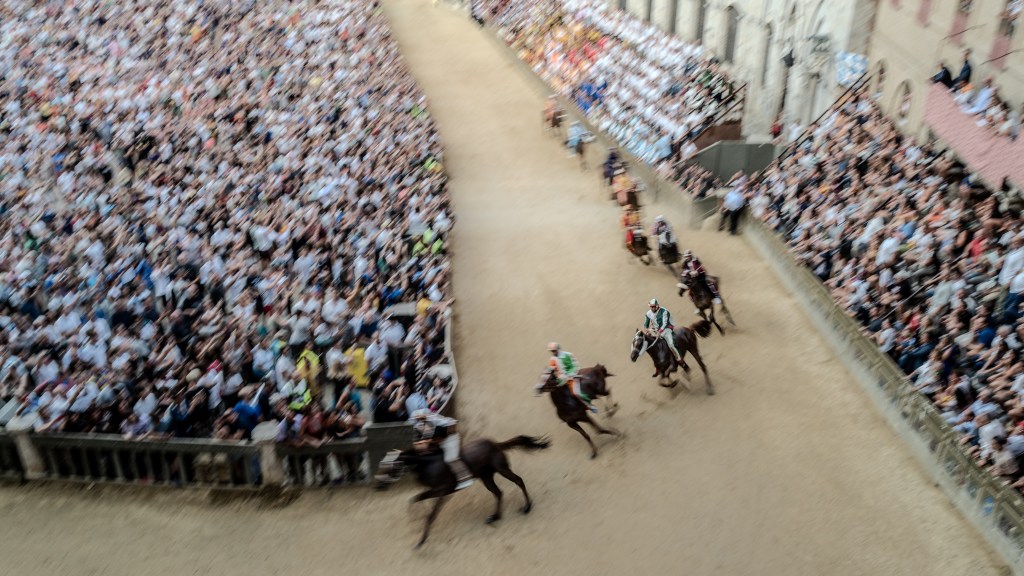
After twenty minutes of false starts, Civetta suddenly makes its move. Istrice is caught off guard, out of position. Lupa is first out of the ropes.
About seventy seconds later Lupa’s Velluto rounds the last corner and turns his head to check his position. He is winning by about a length. Triumphantly, he pumps his riding whip into the air. Shots ring out as he crosses the line. It is not Istrice. It is not Oca — the goose. It is Lupa. Lupa! Lupa! Lupa! The forty-three-year-old, winless veteran on his debutant horse.
The square is at once chaos. Drums bang as contradaioli hurl themselves onto the track. Those not celebrating the win are celebrating the fact that a rival did not win. Velluto rides into a sea of lupaioli. They cradle the horse; tears of joy stream down their faces. Collecting Velluto, they hoist him onto their shoulders like a little boy. They head to the starting line to retrieve their palio. The procession then makes its way to the Duomo to sing the Te Deum. Lupa now has the right to mock all the other contrade, and one way it will do this is by wishing them all a sardonic Merry Christmas, since that’s all they’ve to left to look forward to.
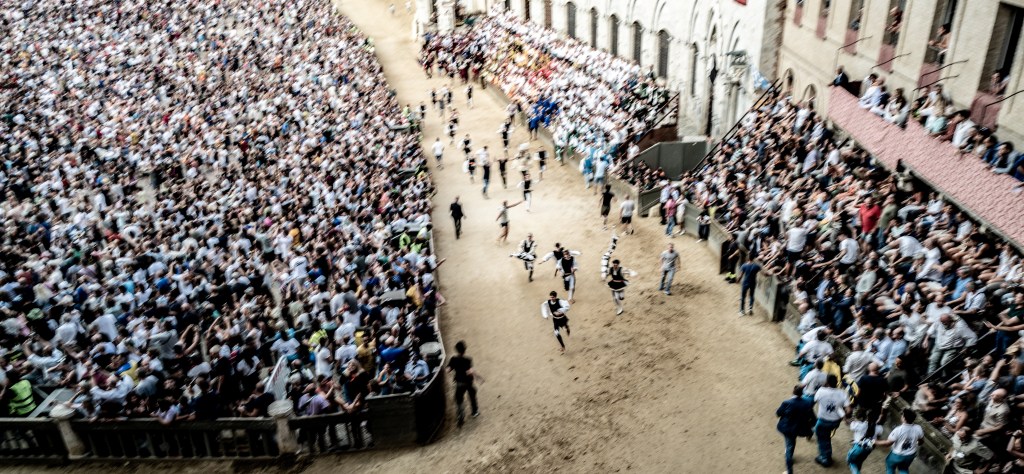
After the service, the fantino is again hoisted on someone’s shoulders. Tears still flow. They will celebrate till the early hours, and for months to come, eating, drinking, singing and praying. We follow the crowd through the narrow streets. The church bells sound. A full moon swings in the Tuscan sky.
What’s it all really about, I ask Mark, next time I see him. “Pride and honor, of course. And identity. The Palio is really about who you are and where you come from. People in Siena feel a very strong sense of belonging. Where today you might belong to some amorphous middle class, being a contradaiolo gives you something special, a strong sense that you matter.”
This article was originally published in The Spectator’s December 2024 World edition.











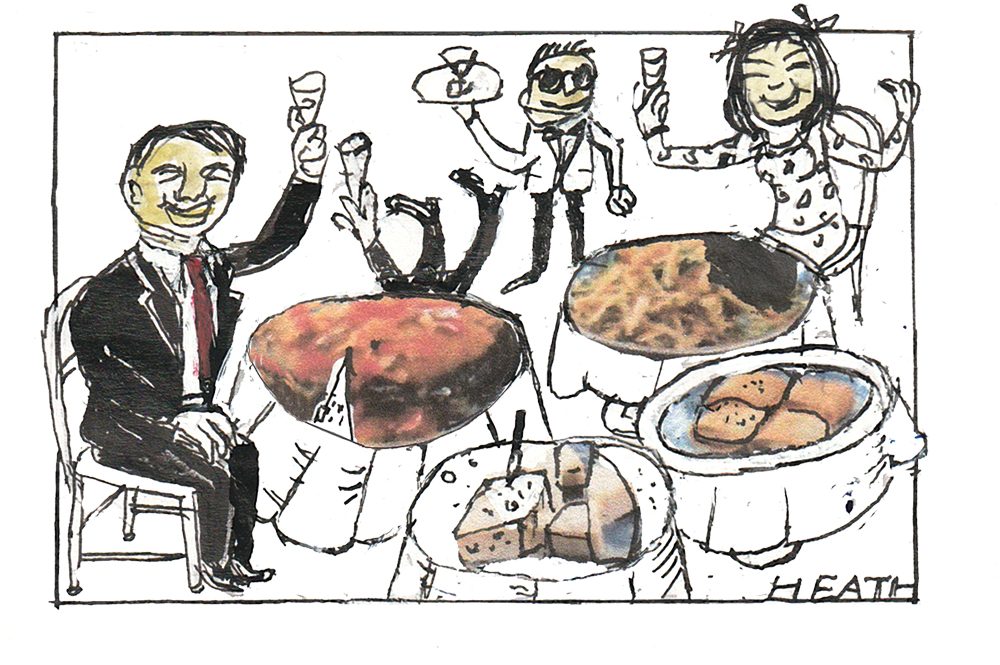
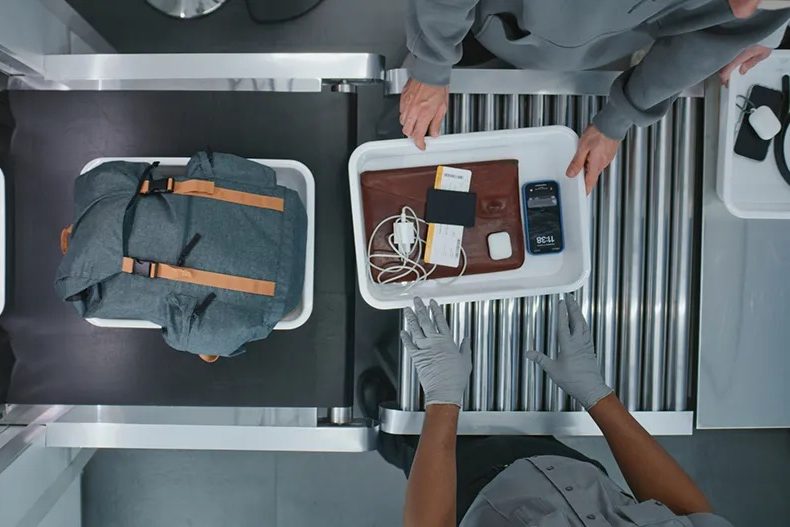
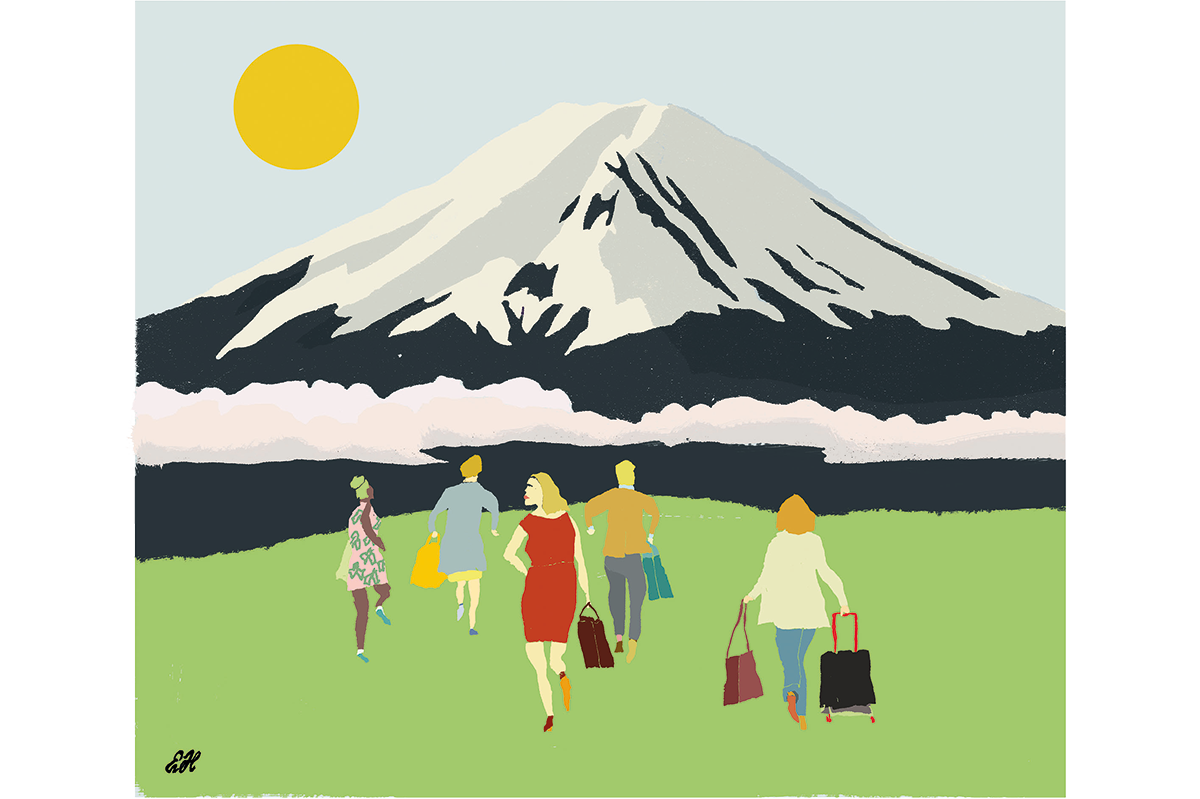

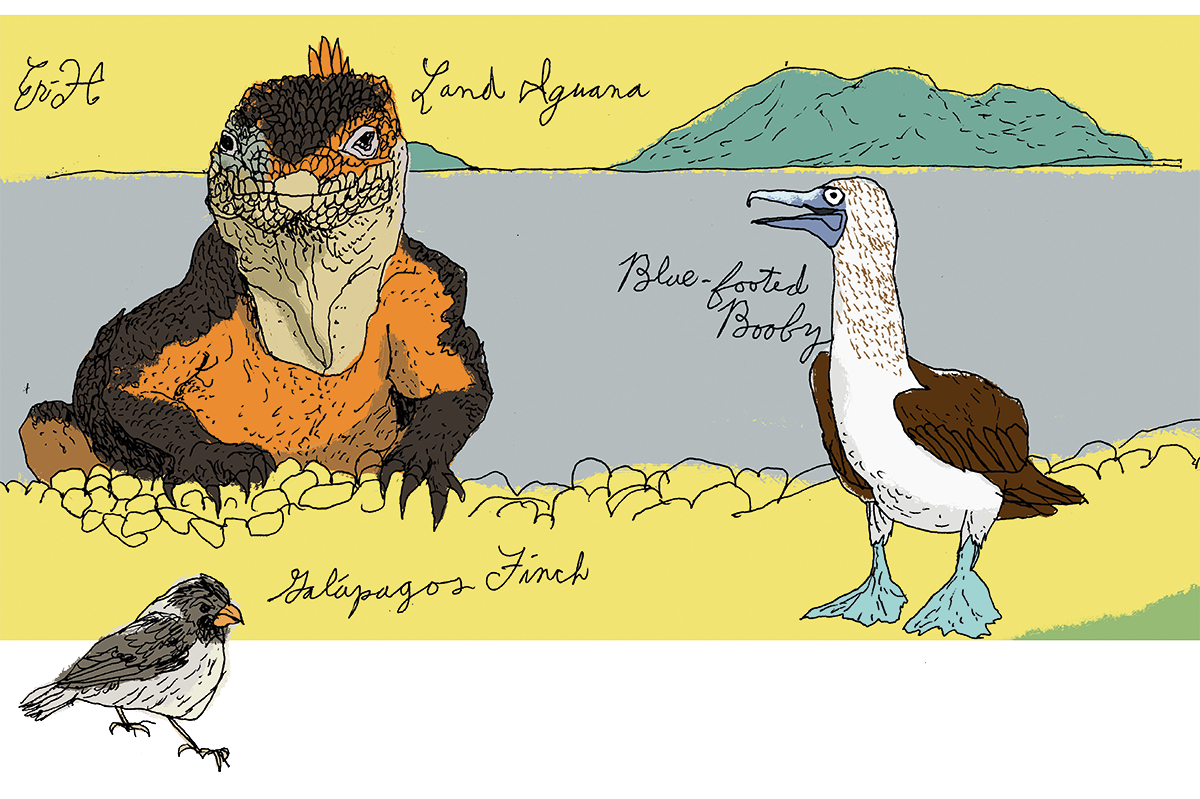







Leave a Reply